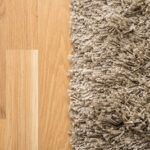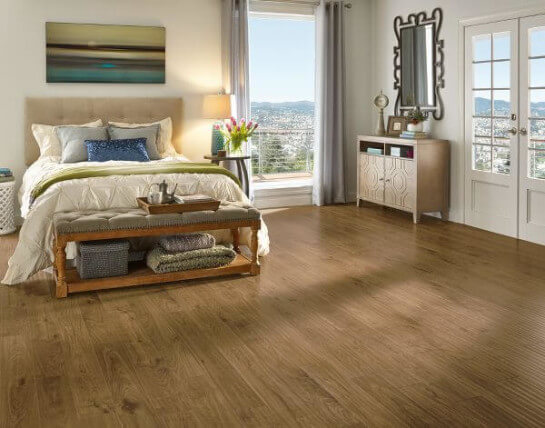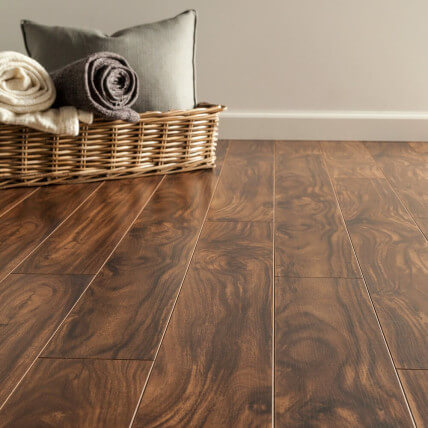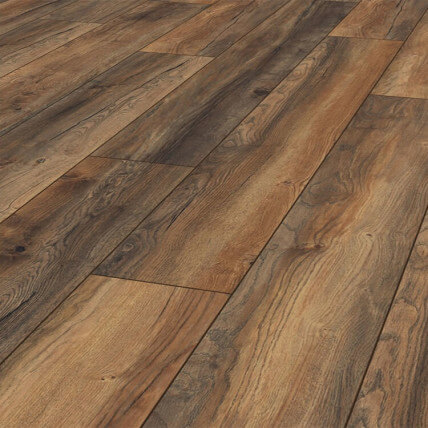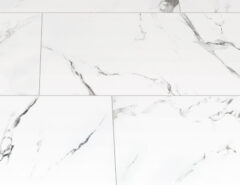Laminate flooring is quickly becoming a popular choice for homeowners because it’s a durable flooring option and easy to maintain. Laminate is made to look like real hardwood and comes in a variety of colors and styles. Plus, since it’s so strong, it’s a good option for families with children and pets. When you’re shopping for laminate flooring, keep these important questions in mind so you make the right choice for your home.
How Durable Is Laminate Flooring?
Laminate flooring consists of four layers: backing, inner core, design layer, and wear layer. The backing is the bottom layer that provides a moisture barrier and protects the floor. The inner core has plastic resin for strength and stability. The design layer is the photographic image of wood glued to the inner core, and the wear layer is the top portion that protects the floor from scratches, fading, and stains.
Not only does the wear layer make it an extremely durable flooring option, but it’s also very easy to clean, and it doesn’t require any special varnishes or waxes to keep it looking nice. Typically, laminate flooring receives an Abrasion Class (AC) rating of AC1 through AC4, although some can go as high as AC5. The AC rating looks at key stress points such as scratches, heat, moisture, impact, and staining, and it determines how well a laminate performs. The higher the AC rating the laminate gets, the more durable it is.
Laminate flooring with an AC1 rating is good for residential rooms with light traffic like bedrooms or closets. Laminate flooring with an AC2 rating is good for rooms with moderate traffic like living rooms or dining rooms. An rating of AC3 or above can withstand heavy traffic and is good for any room in the house and commercial buildings.
Does Thickness Matter?
When it comes to thickness in laminate flooring, thicker doesn’t automatically equal to a more durable flooring. However, thick planks are easier to install, and they provide better impact resistance. Plus, the thicker the plank, the better it is at absorbing sound and the less likely it is to warp. Homeowners typically look for laminate that’s between 12 millimeters and 15 millimeters thick.
Do I Need an Underlayment?
In most cases, installers recommend an underlayment beneath the laminate. While you typically don’t need an underlayment beneath hardwood because it will absorb sound, laminate is made from different material, so an underlayment will limit the transmission of noise. If you’re installing laminate on top of concrete, underlayment also provides some extra padding, moisture resistance, and smooths out the area for your flooring. However, if you’re installing laminate over a base surface that’s already moisture-proof, such as vinyl flooring, underlayment isn’t always a requirement.
What Is Embossed in Register?
At one time, one of the biggest complaints about laminate flooring was that it was easily distinguishable from hardwood flooring. However, laminate quality has improved immensely over the years, and one type of pressing technology, embossed in register, creates an even higher level of realism. With embossed in register, the laminate flooring has small lines imprinted on the surface for a more authentic look. This process makes laminate look as close to real wood as possible.
As you’re looking at the different laminate floor choices available for your home, be sure you know the answers to these questions so you get the perfect flooring for your home and lifestyle.
If you still need more information, or want more in depth answers to any of the above questions, get in touch with our laminate flooring product experts toll free at 1-877-631-2845, via email at customerservice@builddirect.com or browse all our laminate options below.



